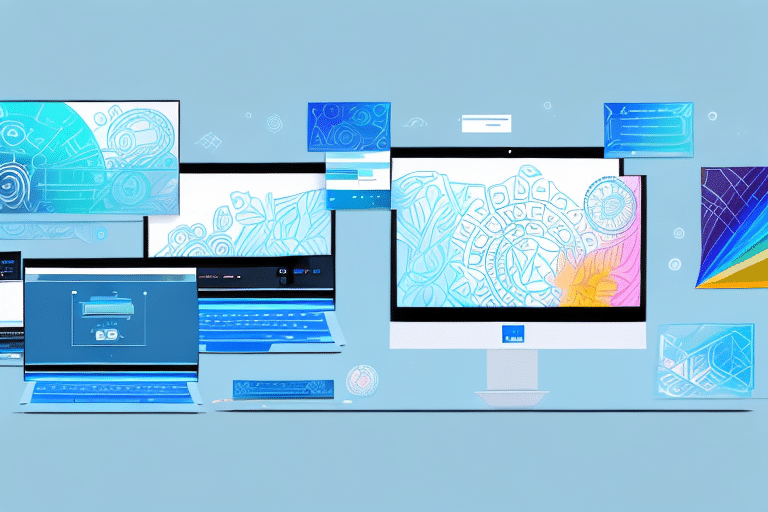The Most Critical Market Trends in Higher Education – Part 1
Through my IT career and now in my sales career, I’ve always been intrigued by which market forces organizations up against and how they are planning to respond. As a Solutions Architect, tracking market trends is part of my role as well as providing advice to customers and potential customers about shifts they could see coming, but also about new exciting technologies.
In this article we look back over the past 12-18 months and a bit into the future, to examine the most important trends facing leaders in higher ed today.
The first trend dates well beyond the 12-18 month timeframe and could go back years or decades: Digital Equity. This has different meanings to different stakeholders on a college or university campus, but can also be defined differently based on what technology is being discussed. In my world, it’s all about access to academic software and compute power. During and following the COVID-19 global pandemic that shut down campuses and businesses everywhere, a spotlight was shone on the need for digital equity.
In higher ed, there are three definitive points for defining digital equity:
- Providing support to students using any device and enabling those students to access the software they need to complete their coursework.
- Guaranteeing the same experience without the need for extra anything.
- Achieving both numbers one and two without any additional financial burdens being passed on to the students.
Let’s dig a little deeper. Being able to support students on any device used to be fairly straightforward by offering physical computer labs. But students are demanding a variety of changes that are quickly making this model obsolete. First, they prefer to use their phones, tablets, and laptops, all of which come in a variety of makes, models, and operating systems. Second, they are looking for more social environments in which to study and learn. Third, they are expecting remote (ie. away from campus) options for learning and access to academic software.
“More than 84% of students believe having remote access to computer labs is important and could improve their performance…”
Source: https://www.splashtop.com/press/splashtop-survey-finds-84-of-university-students-want-remote-access-to-computer-labs
Bring Your Own (BYO)
Another market trend that feeds directly into the digital equity trend is the support of Bring Your Own (BYO) devices. As mentioned above, these devices show up in a variety of form factors running a variety of operating systems. Given that the majority of academic software is still developed for Windows™, providing support to the entire sphere of BYOD gets difficult very quickly.
Arguably the factor causing the most grief to higher ed leaders is Chromebooks. More and more students are graduating from K-12 and primary schools where Chromebooks are widely distributed in an effort to provide digital equity.
“A new report from the market researchers at Canalys claims that Chromebook sales surged 275 percent in the first quarter of 2021, dramatically outpacing the PC industry.”
Source: https://www.thurrott.com/mobile/chrome-os/249863/report-chromebook-success-continues-into-2021
This sub-trend within the larger BYOD trend makes the entire effort toward digital equity in higher education extremely challenging. So what are the options to move forward?
If we meld these two market trends together (Digital Equity + BYOD Support) how does an institution go about guaranteeing the same experience to all students? Up until recently, there were only two choices: provide laptops to all students (1:1 programs) or implement on-premise VDI (virtual desktop infrastructure.) Both of these solutions represent a hefty budget increase to the school and both will require a lot of staff effort to get up and running successfully and over the long term.
Virtual Computer Lab ROI Calculator

Luckily, we now have the cloud and easy-to-consume cloud services like Apporto. There are two distinct categories of cloud computing though, do-it-yourself (DIY) solutions and fully managed cloud desktop services. We’re not going to get into the differences, benefits, or drawbacks of these in this article, but watch this space for just such a comparison in the future.
Back to the three points of Digital Equity and looking at number two: guaranteeing the same experience without the need for extra anything. This means not requiring the students to download and install additional software, clients, VPN software, etc. It also means not forcing students to use a physical lab, or into using loaner laptops, or having to purchase specific hardware. Guaranteeing the same experience from any device means a completely device-agnostic solution, almost like the early days of computing with a dumb terminal. A good real-world analogy is reading a book from the public library. You don’t have to pay anything extra, you don’t need any kind of special reading device, and everyone gets the same version (edition) of the book.
Financial Burden
Finally, point three of Digital Equity is not leveraging any undue financial burdens onto students. With tuition costs hitting all-time highs – exceeding $100,000 per year, students are facing immense debt loads upon graduation, and requiring extra expenses in the form of laptops or computers to complete their degrees is just a recipe for more debt. It is much more in alignment with the mission of higher education to provide free access to as many of the resources needed by students as possible and at little or no extra cost.
Source: https://hechingerreport.org/university-of-chicago-projected-to-be-the-first-u-s-university-to-charge-100000-a-year/
This type of experience for college and university students completing their coursework is critical to their success. As the number of eligible students for admittance continues to decline, an equitable digital or computing experience must be provided to serve students of all backgrounds and situations.
Source: https://www.vox.com/the-highlight/23428166/college-enrollment-population-education-crash
As we conclude our look at part one of the most critical market trends impacting higher ed institutions today, one must wonder is it hopeless? Thankfully, no. There are good options available to help with these exact challenges and perhaps none better than Apporto.
Happy Computing!


